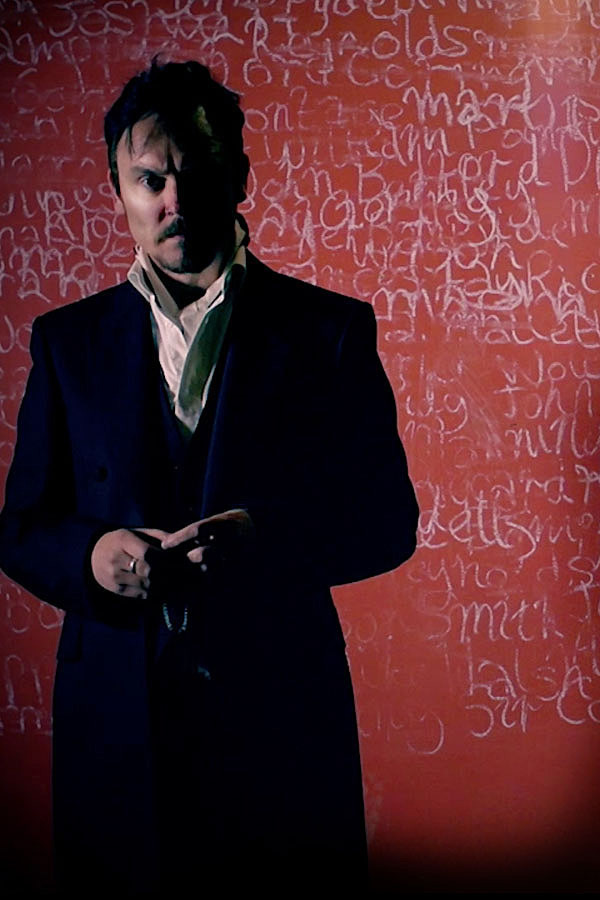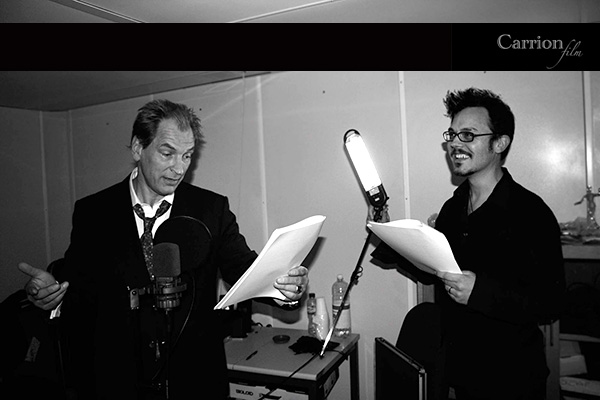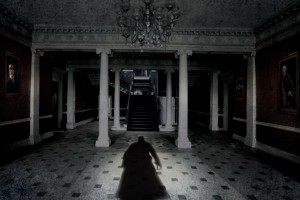by Melanie Crew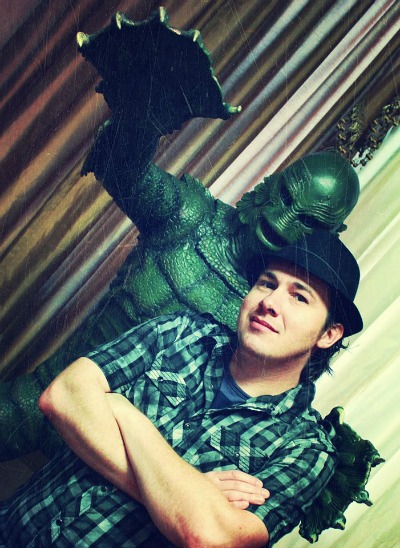
Managing Editor/Contributing Writer
Daniel Griffith, local award-winning filmmaker and founder of Ballyhoo Motion Pictures, will be joining a sinister line-up of horrorific guests at the inaugural Monsterama Convention, founded by our classic monster-lovin’ fiend, friend and ATLRetro contributing writer, AnthonyTaylor, which will be creeping into the Holiday Inn Perimeter in Dunwoody this weekend, August 1-3! So, prepare for a ghastly weekend of ghoulish proportions! Griffith will be joined by a guest list filled to the bloodcurdling brim with chillers like Victoria Price, daughter of Vincent; Hammer scream queen Veronica Carlson, director Jeff Burr, filmmaker Larry Blamire (LOST SKELETON OF CADAVRA), Bram Stoker Award-winning writer Brian Keene, ATLRetro’s very own “Chiller-ess in Charge”, Anya Martin, Kool Kat Shane Morton, a.k.a. Professor Morte [see ATLRetro’s Kool Kat feature on Shane here], Kool Kat Madeline Brumby [see ATLRetro’s Kool Kat feature on Madeline, here] and so many more! So, haunt on down to Monsterama this weekend and get your bones a’rattlin and your classic monster fix!
Griffith, purveyor of all things cinematic and obscure, and no rookie to the B-movie and classic horror genre, has produced and directed over 45 documentaries, with his company, Ballyhoo Motion Pictures, spanning a wide-range of film history, genres and subjects. His documentary library is far too prolific to list them all, but in a nutshell he has directed and produced: THE BLOODIEST SHOW ON EARTH: MAKING VAMPIRE CIRCUS (2010), THIS ISLAND EARTH: 2 ½ YEARS IN THE MAKING (2013), [both will be screened at Monsterama this weekend], RETURN TO EDEN PRAIRIE: 25 YEARS OF MYSTERY SCIENCE THEATRE 3000 (2013) and THE FLESH AND THE FURY: X-POSING TWINS OF EVIL (2012). Griffith is currently in production on CELLULOID WIZARDS IN THE VIDEO WASTELAND: THE SAGA OF EMPIRE PICTURES, the official feature-length documentary delving into the rise and fall of Charles Band’s legendary Empire Pictures studio, known for cult films such as RE-ANIMATOR (1985), ZONE TROOPERS (1985) and GHOULIES (1985). His documentaries have gained him not only notoriety in the cult film arena, but also the 2012 Rondo Award for “Best DVD Bonus Feature” for his documentary biopic on Universal B-movie actor, RondoHatton, TRAIL OF THE CREEPER: MAKING THE BRUTE MAN (2011) and the 2013 Forrest J. Ackerman Lifetime Achievement Award. Griffith is also the official documentarian for the “Mystery Science Theater 3000” DVD releases.
for “Best DVD Bonus Feature” for his documentary biopic on Universal B-movie actor, RondoHatton, TRAIL OF THE CREEPER: MAKING THE BRUTE MAN (2011) and the 2013 Forrest J. Ackerman Lifetime Achievement Award. Griffith is also the official documentarian for the “Mystery Science Theater 3000” DVD releases.
ATLRetro caught up with Daniel Griffith for a quick interview about his devotion to film history, from the greats to the barely-knowns, his desire to set a story to film and his trek into the deep dark cavernous minds of long ago filmmakers, plotting the map of film history.
And while you’re takin’ a gander at our little Q&A with Griffith, take a sneak peek at an excerpt from his documentary, PSYCHO’S SISTER: MAKING THE NAME OF THE GAME IS KILL! (2013), delving into the history of the 1968 drive-in thriller!
ATLRetro: As a documentary filmmaker, you are foremost a film historian and avid preservationist, which is clearly evidenced in the wide variety of documentaries you’ve produced with your company, Ballyhoo Motion Pictures. In the grand scheme of things, why do you feel it is important to not only preserve, but also to share these stories?
Daniel Griffith: The media of the past serves as a type of looking glass or time capsule. It is the definitive visual representation of artistic achievement and human frailty. Therefore, it is important to have a documented record of how those works were created, if only to build awareness and preserve its shelf life. Selfishly, I became a documentary filmmaker to further understand the medium of cinema and television. To me, the film artisans of the past are the direct link to the motion pictures of the future. Studying and understanding their contributions was the BEST film school. But, as I moved from project to project, I began to recognize how many films and television series have drifted into obscurity. I guess I made it my responsibility to tell the story behind those works.
You seem to give a lot of love and respect to the underdogs, to the films and projects of yesteryear that never quite reached the level of success in the industry that the majority set out to achieve. What is it about these films, these filmmakers that magnetize you? That compels you to tell their story?
to tell their story?
I never compartmentalize the films I document. To me, the least successful motion picture can have just as much value to an individual as the most revered or noteworthy. It is my duty as a film and television documentarian to change the way we look at the works of the past; to give each production an equal opportunity to share the spotlight. Who knows? A viewer may discover that the best stories of human triumph and creativity come in the cheapest, most misunderstood packages.
You’ve produced many bonus features and documentaries for Shout! Factory, Synapse Films and VCI Entertainment, etc. over the years, which has included a comprehensive peek into your fans’ favorite sci-fi, horror and ‘80s B-movies, westerns and a variety of retro filmmakers and film companies. Can you tell our readers how you became a documentary filmmaker?
It began with a simple challenge; to singlehandedly create a narrative and follow through with its execution. About eight years ago, I was developing one motion picture script after another. Slowly, a case of cabin fever set in. I was restless. I wanted to get out into the field and visualize a story on film. While discouraged, I revisited a wacky holiday episode of MYSTERY SCIENCE THEATRE 3000, entitled “SANTA CLAUS.” During the opening credits, a title card reading “K. Gordon Murray Presents” appeared on the screen. I thought to myself, “Who is this K. Gordon Murray guy, and why did he choose to distribute this surreal, Mexican children’s film?” In that moment, a documentary concept was born, and simultaneously the seed that would eventually become Ballyhoo Motion Pictures.
The name “Ballyhoo” draws to mind a long list of whimsical, colorful and raucous shenanigans of the circus variety. What’s the story behind the name?
My company name and logo are comprised of several unique personal events. The logo itself dates back to my first exposure to the works of the cinematic showman, William Castle, and his film, HOUSE ON HAUNTEDHILL. The scream that accompanies the logo is the first scream you hear prior to the opening credits of that film. It was the scream that w oke me up as a child when the film played on television. Utilizing it in the context is my way of saying to the viewer, “WAKE UP! The show is about to begin and you don’t want to miss it!” And the name Ballyhoo represents two of my passions; the energy found on the midway of any traveling carnival and the promotional tactics used on the motion pictures of the past.
oke me up as a child when the film played on television. Utilizing it in the context is my way of saying to the viewer, “WAKE UP! The show is about to begin and you don’t want to miss it!” And the name Ballyhoo represents two of my passions; the energy found on the midway of any traveling carnival and the promotional tactics used on the motion pictures of the past.
As a guest on several panels at the first ever Monsterama Convention, including a Q&A session with Victoria Price, Vincent Price’s daughter, and a panel discussing documentary filmmaking, what do you hope to pass on to the eager ears of the convention-goers?
Well, for one, this is a great opportunity to learn more about one of the greatest actors of our time. Vincent Price was not only a celebrated actor in film and television, but he was also an accomplished cook, author, painter and art critic. While he is remembered for his chilling performances in the DR. PHIBES films, as well as William Castle’s, THE TINGLER and HOUSE ON HAUNTED HILL, there was much more to him than the horror genre that sustained him.
Additionally, two of your documentaries [“The Bloodiest Show on Earth: Making Vampire Circus” (2010) and “This Island Earth: 2-½ Years in the Making” (2013)] will be screened throughout the weekend; two very different documentaries, but both created with the same amount of respect and enthusiasm for the subject matter. Can you tell our readers what your favorite experience was while making each and what you would do different, if you could go back and change anything?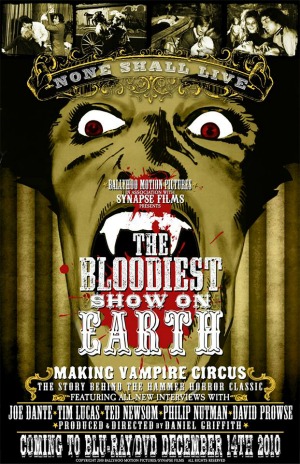
Well, one of the greatest experiences I had working on all the Hammer documentaries, including VAMPIRE CIRCUS, was visiting the renowned Pinewood Studios in England. Filmmaker John Hough, who previously directed Hammer’s TWINS OF EVIL, gave me a private tour of the entire back-lot. This is the studio where most of the James Bond films where shot, the 1978 version of SUPERMAN, the first ALIEN film and Stanley Kubrick’s, FULL METAL JACKET, just to name a few. It was astonishing!
As a filmmaker, you are getting the chance to live out your dream every time you create and release your work into the world, a dream you’ve had since your early childhood. Any advice for the next generation of Kool Kids who long to dive head first into the land of imagination and cinematic storytelling?
Watch as many films as you can! Don’t be afraid to take chances on viewing films that are outside your comfort zone. Just because it’s black and white, or subtitled, doesn’t mean you will not enjoy it. Like an author with a library card, watching films is your first, best education.
Who would you say are the filmmakers that inspired you most?
There are simply too many to count. I continue to be amazed by filmmakers, past and present. I have always admired the way Orson Welles demands more out of everyone, including himself. I deeply admire the poetry found in every frame of a Sergio Leone film. Being a child of the ‘80s, I have always responded to the childlike sentiments found in almost every Spielberg film. On a more obscure note, I find the offerings of director Joseph H. Lewis strangely addictive. This list could go on and on and on…
In such a short amount of time, you’ve got 45-plus credits under your belt, releasing shorts to full-length documentaries, and have gained a following in the MST3K, B-horror and sci-fi circles, with a promise of more to come! Can you give our readers a hint of what’s next for Daniel Griffith and Ballyhoo Motion Pictures?
 In a perversion of Al Jolson’s famous line, I’ll have to say, “You ain’t seen nothin’ yet!” More Mystery Science Theater 3000 productions, for sure. I am currently in post-production on an epic documentary about the history of television’s most iconic series! However, unfortunately, I cannot divulge the title at this time. But, if you find me at Monsterama, I just may be persuaded to tell you.
In a perversion of Al Jolson’s famous line, I’ll have to say, “You ain’t seen nothin’ yet!” More Mystery Science Theater 3000 productions, for sure. I am currently in post-production on an epic documentary about the history of television’s most iconic series! However, unfortunately, I cannot divulge the title at this time. But, if you find me at Monsterama, I just may be persuaded to tell you.
Can you tell our readers something you’d like folks to know that they don’t know already?
While attending the Monsterama Convention, you’ll have the opportunity to stop by the Ballyhoo Motion Pictures table to view original props from various B-movies of the past, as well as purchase EXCLUSIVE retro movie items!
What question do you wish somebody would ask you and what’s the answer?
From the offices of Warren Beatty: “Will you produce a documentary on the history of Dick Tracy?” The answer is, “I’m on my way!”
All photographs are courtesy of Daniel Griffith and used with permission.








